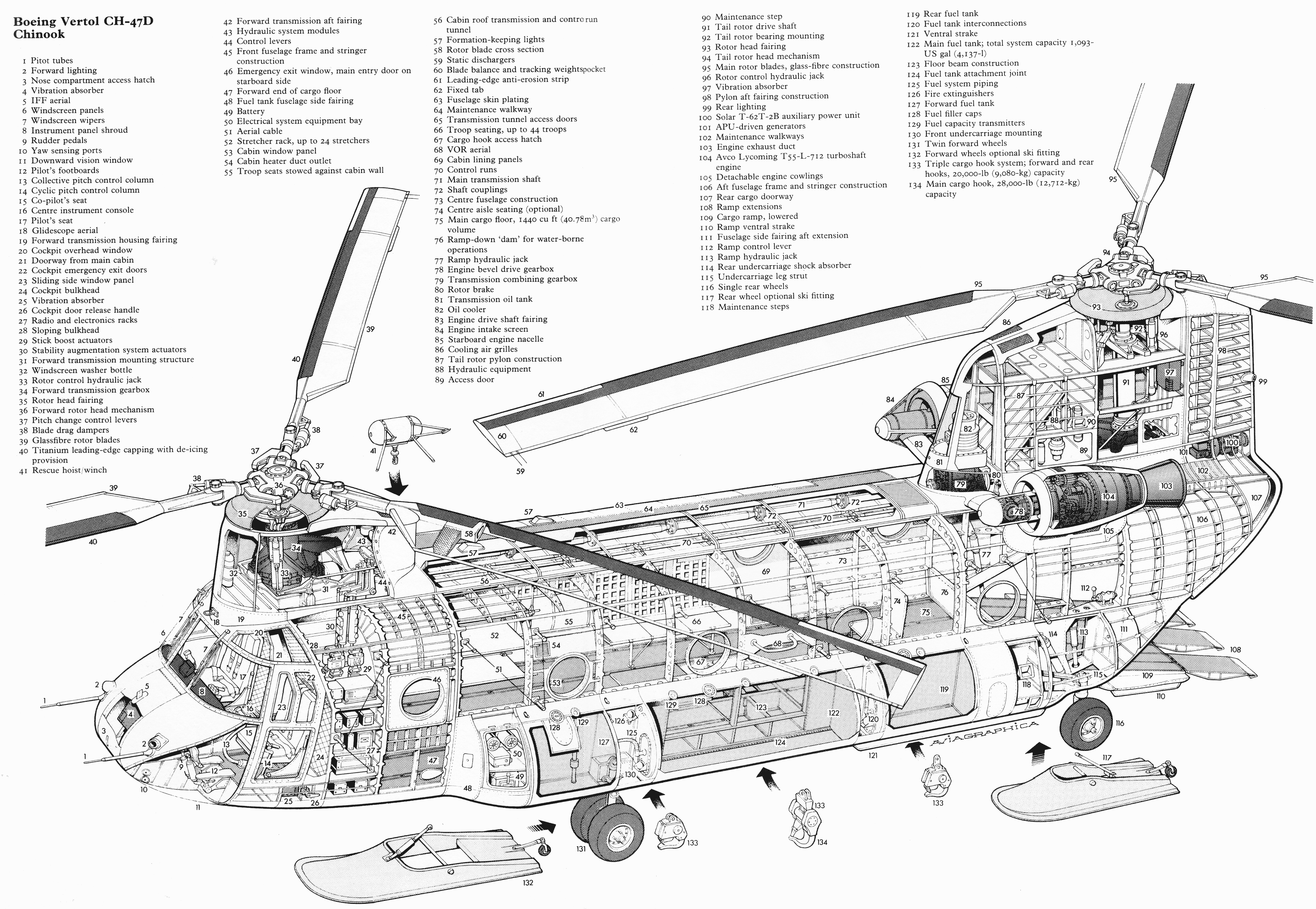Chinook ch-47
 |
| A CH-47F practicing the Pinnacle maneuver whereby soldiers are deposited without the helicopter landing. |




The CH-47 is powered by two turboshaft engines, mounted on each side of the helicopter's rear end and connected to the rotors by driveshafts. Initial models were fitted with engines of 2,200 horsepower. The counter-rotating rotors eliminate the need for an anti-torque vertical rotor, allowing all power to be used for lift and thrust. The ability to adjust lift in either rotor makes it less sensitive to changes in the center of gravity, important for the cargo lifting role. If one engine fails, the other can drive both rotors. The "sizing" of the Chinook was directly related to the growth of the Huey and the Army's tacticians' insistence that initial air assaults be built around the squad. The Army pushed for both the Huey and the Chinook, and this focus was responsible for the acceleration of its air mobility effort.
Improved and more powerful versions of the CH-47 have been developed since the helicopter entered service. The US Army's first major design leap was the now-common CH-47D, which entered service in 1982. Improvements from the CH-47C included upgraded engines, composite rotor blades, a redesigned cockpit to reduce pilot workload, improved and redundant electrical systems, an advanced flight control system and improved avionics.The latest mainstream generation is the CH-47F, which features several major upgrades to reduce maintenance, digitized flight controls, and is powered by two 4,733-horsepower Honeywell engines.
General characteristics
- Crew: 3 (pilot, copilot, flight engineer)
- Capacity:
- 33–55 troops or
- 24 litters and 3 attendants or
- 28,000 lb (12,700 kg) cargo
- Length: 98 ft 10 in (30.1 m)
- Rotor diameter: 60 ft 0 in (18.3 m)
- Height: 18 ft 11 in (5.7 m)
- Disc area: 5,600 ft2 (2,800 ft2 per rotor disc) (260 m2)
- Empty weight: 23,400 lb (10,185 kg)
- Loaded weight: 26,680 lb (12,100 kg)
- Max. takeoff weight: 50,000 lb (22,680 kg)
- Powerplant: 2 × Lycoming T55-GA-714A turboshaft, 4,733 hp (3,631 kW) each
Performance
- Maximum speed: 170 knots (196 mph, 315 km/h)
- Cruise speed: 130 kt (149 mph, 240 km/h)
- Range: 400 nmi (450 mi, 741 km)
- Combat radius: 200 nmi (370,4 km)
- Ferry range: 1,216 nmi (1,400 mi, 2,252 km)
- Service ceiling: 18,500 ft (5,640 m)
- Rate of climb: 1,522 ft/min (7.73 m/s)
- Disc loading: 9.5 lb/ft2 (47 kg/m2)
- Power/mass: 0.28 hp/lb (460 W/kg)
Comments
Post a Comment